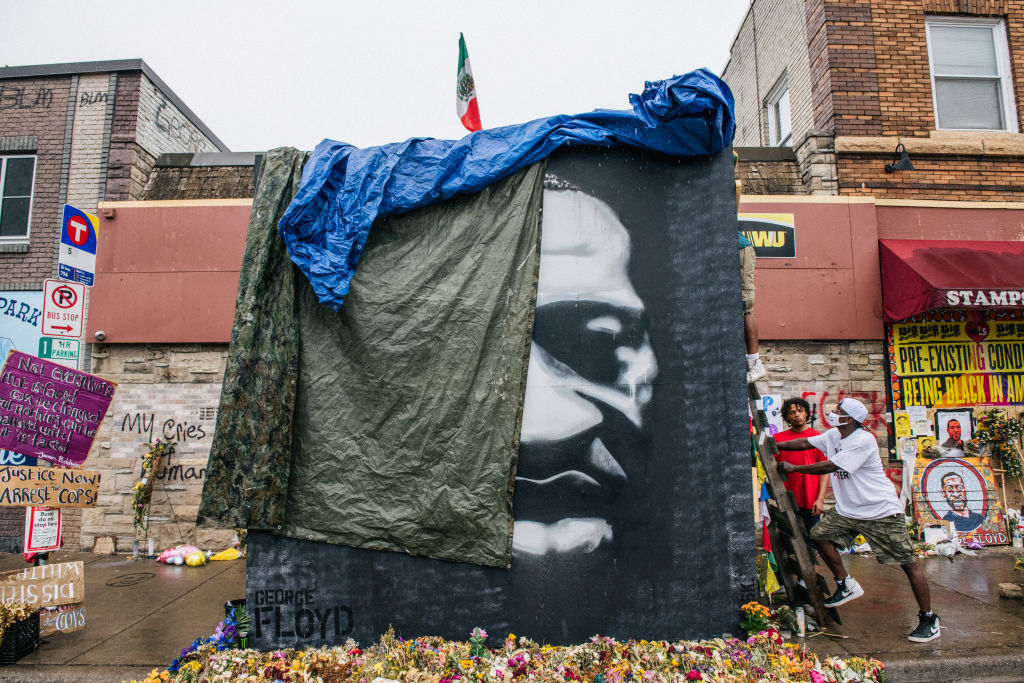
Art Industry News is a daily digest of the most consequential developments coming out of the art world and art market. Here’s what you need to know on this Wednesday, June 10.
NEED-TO-READ
A Historian Comments on the UK’s Monuments Coming Down – The British-Nigerian historian David Olusoga weighs in on the toppling of the monument to slave trader Edward Colston in Bristol. For many outside Bristol, he notes, the shock was not that the statue came down, but that the city had a monument to a slave trader on display in the first place. After recounting the role the city played in the trade, Olusoga points the finger at those who have dragged their heels in discussions about bringing down the monument and others like it. Such conversations, he writes, were predicated on the faulty assumption that “black people and brown people who call Bristol their home would forever tolerate living under the shadow of a man who traded in human flesh, that the power to decide whether Colston stood or fell lay in their hands.” (Guardian)
Akron Art Museum Faces Second Lawsuit Over Worker Mistreatment – Another former employee has filed a lawsuit against the ex-director of the Akron Art Museum, Mark Masuoka, over alleged workplace violations. An art handler and security guard, Jenelle Alverson, says she was discriminated against in the museum’s hostile work environment and that she was forced to resign when she complained. This is the second lawsuit against Masuoka, who stepped down in May, regarding employee mistreatment. (Cleveland.com)
An Artist Lost His Life’s Work During the Protests—But He Isn’t Devastated – The Minneapolis Star-Tribune sits down with 90-year-old artist Aribert Munzner, whose studio in Minneapolis was burned during riots following the death of George Floyd. Although he has lost many of the works he created over his 40-year career, the artist—who was seven when his Jewish family fled Germany during World War II—has accepted the development with equanimity. “I’m starting again because that’s what I’ve been doing all my life,” he said. Indeed, Munzner, who creates large-scale works on rice paper using computer-generated programs that he views as a study of the universe, does not see this moment as a setback. “The whole idea of starting over is a continuity, it is a going from one state of matter to another,” he said. (Minneapolis Star-Tribune)
Native American Artists Navigate Coronavirus Shutdown – Native American artists and artisans have been particularly hard hit by the lockdown era. Not only are Native communities disproportionately affected by the outbreak, but their livelihoods have been threatened by the slowdown of tourists traveling through and buying their work. Markets where they can trade have been shut down; and while some are going online, internet connectivity is hard to come by for many tribes that rely on market sales for significant portions of their income. (New York Times)
ART MARKET
David Kordansky Adds Two Artists – The fast-growing Los Angeles gallery now represents photographer Deana Lawson and painter Jason Fox. Lawson, who creates indelible portraits of black subjects looking directly into the camera, will still be represented by Sikkema Jenkins & Co. in New York. Fox, whose surreal portraits are closely associated with the now-defunct gallery Feature, Inc., will continue to be represented by New York-based Canada gallery. (ARTnews)
The Royal Academy Moves Its Summer Exhibition to Winter – London’s Royal Academy of Arts has announced that it will be moving its annual selling show, the Summer Exhibition, to the winter. New dates for the event have yet to be announced. (Twitter)
Xavier Hufkens Represents Lynda Benglis – Lynda Benglis, the pioneering sculptor best known for her poured latex and wax works, has joined the roster at the Brussels-based gallery Xavier Hufkens. For years, she was represented in New York by the now-private Cheim & Read gallery. (Press release)
COMINGS & GOINGS
Stedelijk Names Two Curators-at-Large – Yvette Mutumba, the founder of C& magazine and a curator of the 10th Berlin Biennale, and Adam Szymczyk, the curator of documenta 14, will help in “reshaping the Stedelijk into a different kind of museum,” according to director Rein Wolfs. (Press release)
Feminist Art Publisher Cynthia Navaretta Has Died – The critic, publisher, and tireless champion of women artists died on May 18 at the age of 97. She established the Women Artists Newsletter in 1975 in New York, which served as a hub of information about women in the arts. “Navaretta was testy, feisty, willing to engage and dialogue, and miracle of miracles change her mind,” critic Cassandra Langer, who published in the newsletter, said in a statement. (ARTnews)
Mexican Painter Manuel Felguérez Has Died – The celebrated painter, sculptor, and educator who was known for breaking away from traditional mural painting in his home country of Mexico, died at age 91. In the postwar years, his geometric abstractions were considered a radical departure from the prevailing figurative style. (ARTnews)
FOR ART’S SAKE
An Avicii Museum Is Coming to Stockholm – A museum dedicated to the late DJ Avicii will make its debut in Stockholm in 2021. Avicii, whose real name was Tim Bergling, was a DJ, producer, and songwriter who died in 2018 from an apparent suicide. The museum’s immersive installations will trace his creative journey from bedroom tinkerer to worldwide success through memorabilia, never-before-seen photos, and unreleased tracks. (Variety)
National Gallery Buys Major Sorolla Painting – The National Gallery in London paid £325,000 ($415,338) for a work by the Spanish impressionist Joaquín Sorolla. The Drunkard, Zarauz (1910) is the first work by the artist to enter the collection and depicts an inebriated man looking directly at the viewer. (Guardian)
Photographer’s Image of Hong Kong Protester Wins Sony Award – Chung Ming-ko’s photographs of Hong Kong’s injured protesters have earned the photojournalist first prize in Sony World Photography Awards’ documentary category. The series, “Wounds Of Hong Kong,” captures 24 men and women, some with scars and bandages, as an unforgettable testimony to police brutality. (SCMP)